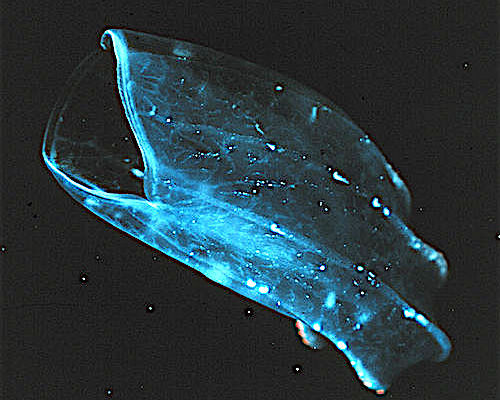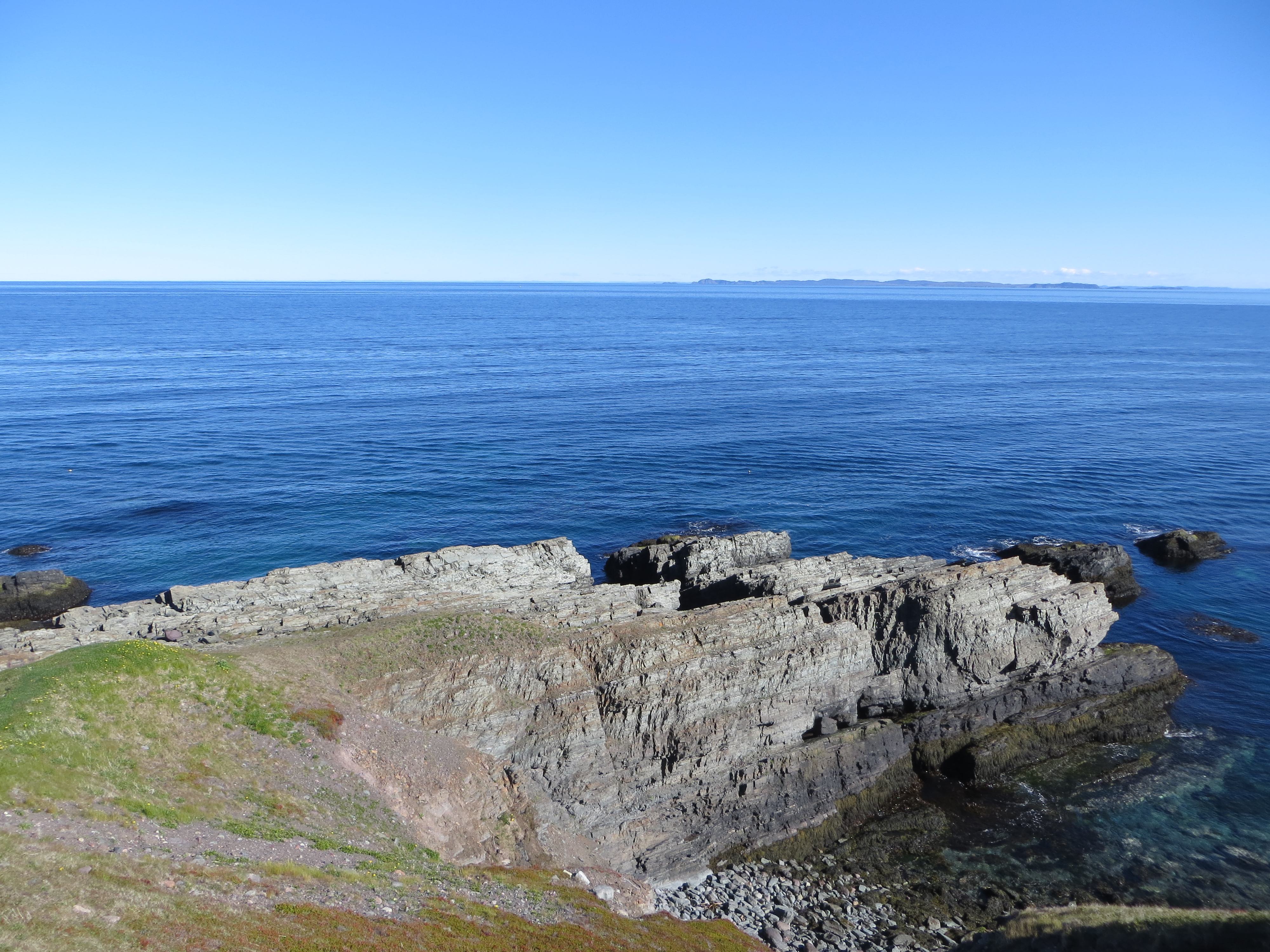|
Ctenophores
Ctenophora (; : ctenophore ) is a phylum of marine invertebrates, commonly known as comb jellies, that marine habitats, inhabit sea waters worldwide. They are notable for the groups of cilia they use for swimming (commonly referred to as "combs"), and they are the largest animals to swim with the help of cilia. Depending on the species, adult ctenophores range from a few millimeters to in size. 186 living species are recognised. Their bodies consist of a mass of jelly, with a layer two cells thick on the outside, and another lining the internal cavity. The phylum has a wide range of body forms, including the egg-shaped Cydippida, cydippids with a pair of retractable tentacles that capture prey, the flat, generally combless Platyctenida, platyctenids, and the large-mouthed Beroidae, beroids, which prey on other ctenophores. Almost all ctenophores function as predators, taking prey ranging from microscopic larvae and rotifers to the adults of small crustaceans; the excepti ... [...More Info...] [...Related Items...] OR: [Wikipedia] [Google] [Baidu] |
Beroidae
Beroidae is a family of ctenophores or comb jellies more commonly referred to as the beroids. It is the only known family within the monotypic order Beroida and the class Nuda. They are distinguished from other comb jellies by the complete absence of tentacles, in both juvenile and adult stages. Species of the family Beroidae are found in all the world's oceans and seas and are free-swimmers that form part of the plankton. Anatomy Some members of the diverse genus ''Beroe'' may occasionally attain a length of up to , though most species and individuals are less than about 10 cm; '' Neis cordigera'' is among the largest species in the class, often exceeding in length. The body is melon or cone-shaped with a wide mouth and pharynx and a capacious gastrovascular cavity. Many meridional canals branch off this and form a network of diverticulae in the mesogloea. There are no tentacles but there are a row of branched papillae, forming a figure of eight around the aboral tip. ... [...More Info...] [...Related Items...] OR: [Wikipedia] [Google] [Baidu] |
Scleroctenophora
Scleroctenophora is an extinct class of stem group ctenophores, known from the Chinese Maotianshan shales of Yunnan. It is dated to Cambrian Stage 3 and belongs to late Early Cambrian The Cambrian ( ) is the first geological period of the Paleozoic Era, and the Phanerozoic Eon. The Cambrian lasted 51.95 million years from the end of the preceding Ediacaran period 538.8 Ma (million years ago) to the beginning of the Ordov ... strata. Scleroctenophorans are easily distinguished from other ctenophores by the presence of an internal skeleton that supports the body. References Prehistoric ctenophores Maotianshan shales fossils {{Ctenophore-stub ... [...More Info...] [...Related Items...] OR: [Wikipedia] [Google] [Baidu] |
Cnidaria
Cnidaria ( ) is a phylum under kingdom Animalia containing over 11,000 species of aquatic invertebrates found both in fresh water, freshwater and marine environments (predominantly the latter), including jellyfish, hydroid (zoology), hydroids, sea anemones, corals and some of the smallest marine parasites. Their distinguishing features are an uncentralized nervous system distributed throughout a gelatinous body and the presence of cnidocytes or cnidoblasts, specialized cells with ejectable flagella used mainly for envenomation and capturing prey. Their bodies consist of mesoglea, a non-living, jelly-like substance, sandwiched between two layers of epithelium that are mostly one cell (biology), cell thick. Cnidarians are also some of the few animals that can reproduce both sexually and asexually. Cnidarians mostly have two basic body forms: swimming medusa (biology), medusae and sessility (motility), sessile polyp (zoology), polyps, both of which are radially symmetrical with mou ... [...More Info...] [...Related Items...] OR: [Wikipedia] [Google] [Baidu] |
Tentaculata
Tentaculata is a class of comb jellies, one of two classes in the phylum Ctenophora. The common feature of this class is a pair of long, feathery, contractile tentacles, which can be retracted into specialised ciliated sheaths. In some species, the primary tentacles are reduced and they have smaller, secondary tentacles. The tentacles have colloblasts, which are sticky-tipped cells that trap small prey. Body size and shape varies widely. The group includes the small, oval sea gooseberries found on both Atlantic and Pacific coasts. The more flattened species of the genus '' Mnemiopsis'', about long, are common on the upper Atlantic coast; it has a large mouth and mainly feeds on larval molluscs and copepod Copepods (; meaning 'oar-feet') are a group of small crustaceans found in nearly every freshwater and saltwater habitat (ecology), habitat. Some species are planktonic (living in the water column), some are benthos, benthic (living on the sedimen ...s. This species is bri ... [...More Info...] [...Related Items...] OR: [Wikipedia] [Google] [Baidu] |
Sponge
Sponges or sea sponges are primarily marine invertebrates of the animal phylum Porifera (; meaning 'pore bearer'), a basal clade and a sister taxon of the diploblasts. They are sessile filter feeders that are bound to the seabed, and are one of the most ancient members of macrobenthos, with many historical species being important reef-building organisms. Sponges are multicellular organisms consisting of jelly-like mesohyl sandwiched between two thin layers of cells, and usually have tube-like bodies full of pores and channels that allow water to circulate through them. They have unspecialized cells that can transform into other types and that often migrate between the main cell layers and the mesohyl in the process. They do not have complex nervous, digestive or circulatory systems. Instead, most rely on maintaining a constant water flow through their bodies to obtain food and oxygen and to remove wastes, usually via flagella movements of the so-called " collar ... [...More Info...] [...Related Items...] OR: [Wikipedia] [Google] [Baidu] |
Rotifer
The rotifers (, from Latin 'wheel' and 'bearing'), sometimes called wheel animals or wheel animalcules, make up a phylum (Rotifera ) of microscopic and near-microscopic Coelom#Pseudocoelomates, pseudocoelomate animals. They were first described by John Harris (writer), Rev. John Harris in 1696, and other forms were described by Antonie van Leeuwenhoek in 1703. Most rotifers are around long (although their size can range from to over ), and are common in freshwater environments throughout the world with a few Seawater, saltwater species. Some rotifers are free swimming and truly planktonic, others move by inchworming along a substrate, and some are Sessility (zoology), sessile, living inside tubes or gelatinous holdfast (biology), holdfasts that are attached to a substrate. About 25 species are colonial (e.g., ''Sinantherina semibullata''), either sessile or planktonic. Rotifers are an important part of the freshwater zooplankton, being a major foodsource and with many specie ... [...More Info...] [...Related Items...] OR: [Wikipedia] [Google] [Baidu] |
Crustacea
Crustaceans (from Latin meaning: "those with shells" or "crusted ones") are invertebrate animals that constitute one group of arthropods that are traditionally a part of the subphylum Crustacea (), a large, diverse group of mainly aquatic arthropods including decapods (shrimps, prawns, crabs, lobsters and crayfish), seed shrimp, branchiopods, fish lice, krill, remipedes, isopods, barnacles, copepods, opossum shrimps, amphipods and mantis shrimp. The crustacean group can be treated as a subphylum under the clade Mandibulata. It is now well accepted that the hexapods (insects and entognathans) emerged deep in the Crustacean group, with the completed pan-group referred to as Pancrustacea. The three classes Cephalocarida, Branchiopoda and Remipedia are more closely related to the hexapods than they are to any of the other crustaceans ( oligostracans and multicrustaceans). The 67,000 described species range in size from '' Stygotantulus stocki'' at , to the Japanese spider ... [...More Info...] [...Related Items...] OR: [Wikipedia] [Google] [Baidu] |
Salp
A salp (: salps, also known colloquially as “sea grape”) or salpa (: salpae or salpas) is a barrel-shaped, Plankton, planktonic tunicate in the family Salpidae. The salp moves by contracting its gelatinous body in order to pump water through it; it is one of the most efficient examples of jet propulsion in the animal kingdom. The salp feeds on phytoplankton, which it collects by straining water through its internal feeding filters. Distribution Salps are common in equatorial, temperate, and cold seas, where they can be seen at the surface, singly or in long, stringy colony (biology), colonies. The most abundant concentrations of salps are in the Southern Ocean (near Antarctica), where they sometimes form enormous swarms, often in deep water, and are sometimes even more abundant than krill. Since 1910, while krill populations in the Southern Ocean have declined, salp populations appear to be increasing. Salps have been seen in increasing numbers along the coast of Washingto ... [...More Info...] [...Related Items...] OR: [Wikipedia] [Google] [Baidu] |
Cambrian Stage 3
Cambrian Stage 3 is the still unnamed third stage of the Cambrian. It succeeds Cambrian Stage 2 and precedes Cambrian Stage 4, although neither its base nor top have been formally defined. The plan is for its lower boundary to correspond approximately to the first appearance of trilobites, about million years ago, though the globally asynchronous appearance of trilobites warrants the use of a separate, globally synchronous marker to define the base. The upper boundary and beginning of Cambrian Stage 4 is informally defined as the first appearance of the trilobite genera ''Olenellus'' or ''Redlichia'' around million years ago. Naming The International Commission on Stratigraphy has not officially named the 3rd stage of the Cambrian. The stage approximately corresponds to the "Atdabanian", which is used by geologists working in Siberia. Biostratigraphy The oldest trilobite known is ''Lemdadella'' which appears at the beginning of the ''Fallotaspis'' zone. The Cambrian radiation of ... [...More Info...] [...Related Items...] OR: [Wikipedia] [Google] [Baidu] |
Cambrian
The Cambrian ( ) is the first geological period of the Paleozoic Era, and the Phanerozoic Eon. The Cambrian lasted 51.95 million years from the end of the preceding Ediacaran period 538.8 Ma (million years ago) to the beginning of the Ordovician Period 486.85 Ma. Most of the continents lay in the southern hemisphere surrounded by the vast Panthalassa Ocean. The assembly of Gondwana during the Ediacaran and early Cambrian led to the development of new convergent plate boundaries and continental-margin arc magmatism along its margins that helped drive up global temperatures. Laurentia lay across the equator, separated from Gondwana by the opening Iapetus Ocean. The Cambrian marked a profound change in life on Earth; prior to the Period, the majority of living organisms were small, unicellular and poorly preserved. Complex, multicellular organisms gradually became more common during the Ediacaran, but it was not until the Cambrian that fossil diversity seems to rapidly ... [...More Info...] [...Related Items...] OR: [Wikipedia] [Google] [Baidu] |






